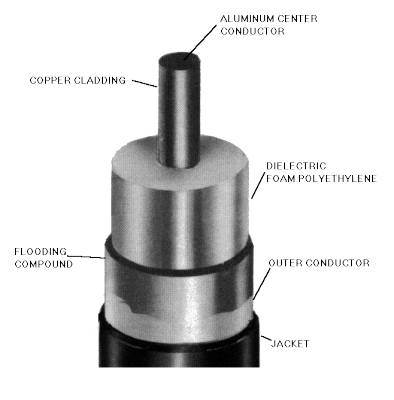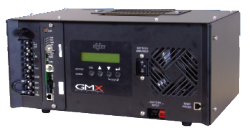Introduction to Broadband Networks
Network Implementation Process;
Design, Installation, and Certification
Broadband Networks are high
bandwidth, and based on RF distribution systems. These networks
initially carried multiple television signals (channels) in
modulated format (pixel, chroma, audio).
Each channel was 6 Mega-Hertz wide. New modulation methods for digital high definition
channels can compress multiple analog channels into one.
Each Channel can be subdivided to carry other
types of information besides video as long as they are
modulated. Data is a typical example; the cable companies provides that
service to the consumer on regular basis, and depending on the modulation method, and compression, can
carry several times the bandwidth in data-rate. Channels can be grouped
together to form much larger blocks, when needed, to satisfy high data
bandwidth demands. Another advantage of broadband networks is division,
or segregation of services that are non-switched. In baseband networks
(IEEE 802.3 or Ethernet type networks), the services share the same
single channel (packet network), and are not segregated, but prioritized
in the TCP/IP realm. In Broadband Networks, you can implement multiple
segregated TCP/IP networks, coexisting within the same RF network.
Broadband network infrastructure
is composed of active elements (such as amplifiers, and power supplies),
and passive elements such as cable, directional couplers,
taps, and signal conditioning devices.
Full duplex communication is possible by bridging the upstream and
downstream at the head-end (CMTS). The head-end also provides the
connection to the outside world through various communication media
(land-lines, microwave and satellite links, etc.).

We will work with you to define
your requirements for a redundant, well-planned Broadband Network (RF
distribution system) capable of carrying multiple services that will
serve your needs for many years to come. Our expert crew will install
the network, and our engineering staff will use state of the art
instruments to fully test the system. We will provide you with first
class, detailed documentation that includes design, routing, system
certification, and complete distortion test results (Carrier to noise,
Composite beats, and second order).

We can train your employees to
maintain the system, or offer you options should you wish to use our
maintenance services. Of course, we warranty our work against material,
and workmanship defects for at least one year.
For more information please see
Broadband Design,
Broadband Certification,
Broadband Installation.